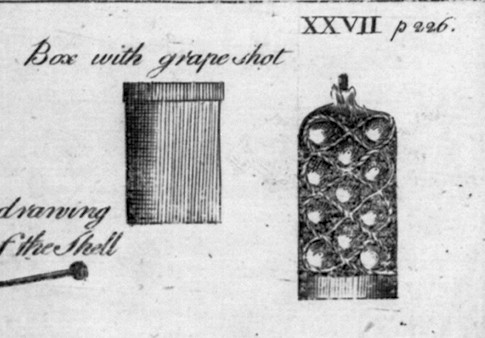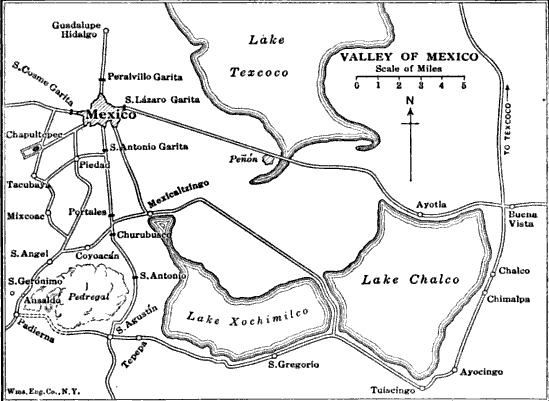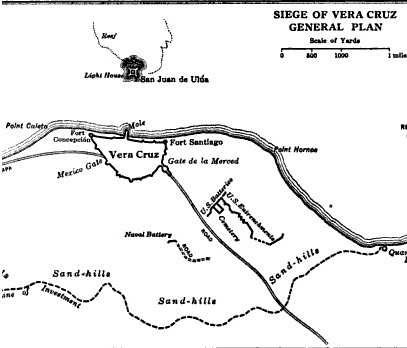|
James Green Martin
James Green Martin (February 14, 1819 – October 4, 1878) was a brigadier general in the Confederate States Army during the American Civil War. Early life Martin was born in Elizabeth City, North Carolina, the son of Dr. William D. Martin and Sophia Dauge Martin. He attended the United States Military Academy at West Point and graduated in 1840, fourteenth in the class, directly behind future Confederate general Richard S. Ewell. On July 12, 1844, Martin married Mary Ann Murray Read, great-granddaughter of Declaration of Independence signer George Read and General William Thompson.General James Green Martin biography at Thomas' Legion biography at ncgenweb.us Military care ...
|
Elizabeth City, North Carolina
Elizabeth City is a city in Pasquotank County, North Carolina, Pasquotank County, North Carolina, United States. As of the 2020 census, it had a population of 18,629. Elizabeth City is the county seat and largest city of Pasquotank County. It is the cultural, economic and educational hub of the sixteen-county Historic Albemarle region of northeastern North Carolina. Elizabeth City is the center of the Elizabeth City micropolitan area, Elizabeth City Micropolitan Statistical Area, with a population of 64,094 as of 2010. It is part of the larger Hampton Roads, Virginia Beach-Norfolk, VA-NC Combined Statistical Area. The city is the economic center of the region, as well as home to many historic sites and cultural traditions. Marketed as the "Harbor of Hospitality", Elizabeth City has had a long history of shipping due to its location at a narrowed bend of the Pasquotank River. Founded in 1794, Elizabeth City prospered early on from the Dismal Swamp Canal as a mercantile city. La ... [...More Info...] [...Related Items...] OR: [Wikipedia] [Google] [Baidu] |
Richard S
Richard is a male given name. It originates, via Old French, from Old Frankish and is a compound of the words descending from Proto-Germanic ''*rīk-'' 'ruler, leader, king' and ''*hardu-'' 'strong, brave, hardy', and it therefore means 'strong in rule'. Nicknames include "Richie", "Dick", "Dickon", " Dickie", "Rich", "Rick", "Rico", "Ricky", and more. Richard is a common English, German and French male name. It's also used in many more languages, particularly Germanic, such as Norwegian, Danish, Swedish, Icelandic, and Dutch, as well as other languages including Irish, Scottish, Welsh and Finnish. Richard is cognate with variants of the name in other European languages, such as the Swedish "Rickard", the Catalan "Ricard" and the Italian "Riccardo", among others (see comprehensive variant list below). People named Richard Multiple people with the same name * Richard Andersen (other) * Richard Anderson (other) * Richard Cartwright (other) * Ri ... [...More Info...] [...Related Items...] OR: [Wikipedia] [Google] [Baidu] |
Stonewall Jackson
Thomas Jonathan "Stonewall" Jackson (January 21, 1824 – May 10, 1863) was a Confederate general during the American Civil War, considered one of the best-known Confederate commanders, after Robert E. Lee. He played a prominent role in nearly all military engagements in the Eastern Theater of the war until his death, and had a key part in winning many significant battles. Military historians regard him as one of the most gifted tactical commanders in U.S. history. Born in what was then part of Virginia (now in West Virginia), Jackson received an appointment to the United States Military Academy at West Point and graduated in the class of 1846. He served in the U.S. Army during the Mexican–American War of 1846–1848 and distinguished himself at Chapultepec. From 1851 to 1861, he taught at the Virginia Military Institute, where he was unpopular with his students. When Virginia seceded from the Union in May 1861 after the attack on Fort Sumter, Jackson joined the Confed ... [...More Info...] [...Related Items...] OR: [Wikipedia] [Google] [Baidu] |
Grapeshot
Grapeshot is a type of artillery round invented by a British Officer during the Napoleonic Wars. It was used mainly as an anti infantry round, but had other uses in naval combat. In artillery, a grapeshot is a type of ammunition that consists of a collection of smaller-caliber round shots, which in most cases are about the size of a golf ball, packed tightly in a canvas bag and separated from the gunpowder charge by a metal wadding, rather than being a single solid projectile. Grapeshot also comes packaged in clusters of three by iron rings, and in three tiers, with the shot being held in by cast iron rings. When assembled, the shot resembled a cluster of grapes, hence the name. Grapeshot was used both on land and at sea. On firing, the canvas wrapping disintegrates and the contained balls scatter out from the muzzle, giving a ballistic effect similar to a giant shotgun. Grapeshot was devastatingly effective against massed infantry at short range and was also used at medium rang ... [...More Info...] [...Related Items...] OR: [Wikipedia] [Google] [Baidu] |
Battle Of Churubusco
The Battle of Churubusco took place on August 20, 1847, while Santa Anna's army was in retreat from the Battle of Contreras or Battle of Padierna during the Mexican–American War. It was the battle where the San Patricio Battalion, made up largely of US deserters, made their last stand against U.S. forces. The U.S. Army was victorious, outnumbering more than two-to-one the defending Mexican troops. After the battle, the U.S. Army was only 5 miles (8 km) away from Mexico City. 50 Saint Patrick's Battalion members were officially executed by the U.S. Army, all but two by hanging. Collectively, this was the largest mass execution in United States history. Background Following their defeats at Contreras, Antonio López de Santa Anna ordered Major General Nicolás Bravo Rueda with the Army of the Center, to retreat from San Antonio to Churubusco.Bauer, K.J., 1974, ''The Mexican War, 1846-1848'', New York:Macmillan, Santa Anna also ordered Major General Manuel Rincón to ... [...More Info...] [...Related Items...] OR: [Wikipedia] [Google] [Baidu] |
Battle Of Contreras
The Battle of Contreras, also known as the Battle of Padierna, took place on 19–20 August 1847, in one of the final encounters of the Mexican–American War, as invading U.S. forces under Winfield Scott approached the Mexican capital. American forces surprised and then routed the Mexican forces of General Gabriel Valencia, who had disobeyed General Antonio López de Santa Anna's orders for his forces' placement. Although the battle was an overwhelming victory for U.S. forces, there are few depictions of it in contemporary popular prints. The armies re-engaged the next day in the Battle of Churubusco. Background General Gabriel Valencia's army of the north was part of the forces that fought at the Battle of Buena Vista in February 1847, in which Santa Anna retreated before giving a crushing blow to the forces of Zachary Taylor. The Mexican forces were then divided in two, with one sent to Cerro Gordo and the other to San Luis Potosí. General Valencia was given the command of ... [...More Info...] [...Related Items...] OR: [Wikipedia] [Google] [Baidu] |
Battle Of Cerro Gordo
The Battle of Cerro Gordo, or Battle of Sierra Gordo, was an engagement in the Mexican–American War on April 18, 1847. The battle saw Winfield Scott's United States troops outflank Antonio López de Santa Anna's larger Mexican army, driving it from a strong defensive position. Background After United States forces captured the port of Veracruz on March 29, 1847, General Winfield Scott advanced towards Mexico City on April 2 by crossing the Rio Antigua.Bauer, K.J., 1974, ''The Mexican War, 1846–1848'', New York: Macmillan, General Antonio López de Santa Anna, commanding Mexican forces in the area, had prepared fortifications at Cerro Gordo, near Xalapa, with more than 8,700 soldiers in a fortified defile, dominated by El Telegrafo. These included several batteries under the command of brigadier generals Luis Pinzon, Jose Maria Jararo, and Romulo Diaz de la Vega. Scott's leading division, commanded by David E. Twiggs, reached the Cerro Gordo Pass on April 12. Battle ... [...More Info...] [...Related Items...] OR: [Wikipedia] [Google] [Baidu] |
Battle Of Vera Cruz
The Battle of Veracruz was a 20-day siege of the key Mexican beachhead seaport of Veracruz, Veracruz, Veracruz during the Mexican–American War. Lasting from March 9–29, 1847, it began with the first large-scale amphibious assault conducted by United States military forces, and ended with the surrender and occupation of the city. U.S. forces then marched inland to Mexico City. Background After the battles of Battle of Monterrey, Monterrey and Battle of Buena Vista, Buena Vista, much of Zachary Taylor's Army of Occupation (Mexico), Army of Occupation was transferred to the command of Major General Winfield Scott in support of the upcoming campaign. That campaign, determined by Scott and other Washington, D.C., Washington officials, would be a Veracruz landing and an advance inland.Bauer, K.J., 1974, ''The Mexican War, 1846–1848'', New York: Macmillan, Mexican military intelligence knew in advance of U.S. plans to attack Veracruz, but internal government turmoil left them ... [...More Info...] [...Related Items...] OR: [Wikipedia] [Google] [Baidu] |
Battle Of Monterey
The Battle of Monterey, at Monterey, California, occurred on 7 July 1846, during the Mexican–American War. The United States captured the town unopposed. Prelude In February 1845, at the Battle of Providencia, the Californio forces had ousted the Mexican-appointed non-Californio governor, Manuel Micheltorena, and most of his forces from Alta California. The central government in Mexico City cancelled an attempt to reassert authority and grudgingly recognized the regime of the succeeding Californio governor, Pio Pico, who remained nominally in charge in Alta California. The main forces available to the United States in California were the about 400–500 bluejacket sailors and U.S. Marines on board the five ships of the Navy’s Pacific Squadron. In November 1845, Commodore John D. Sloat, commander of the Pacific Squadron, then at Mazatlan, Mexico, was joined by the , which carried orders that if Sloat learned "beyond a doubt" that war between the U.S. and Mexico had begun, h ... [...More Info...] [...Related Items...] OR: [Wikipedia] [Google] [Baidu] |
Maine
Maine () is a state in the New England and Northeastern regions of the United States. It borders New Hampshire to the west, the Gulf of Maine to the southeast, and the Canadian provinces of New Brunswick and Quebec to the northeast and northwest, respectively. The largest state by total area in New England, Maine is the 12th-smallest by area, the 9th-least populous, the 13th-least densely populated, and the most rural of the 50 U.S. states. It is also the northeasternmost among the contiguous United States, the northernmost state east of the Great Lakes, the only state whose name consists of a single syllable, and the only state to border exactly one other U.S. state. Approximately half the area of Maine lies on each side of the 45th parallel north in latitude. The most populous city in Maine is Portland, while its capital is Augusta. Maine has traditionally been known for its jagged, rocky Atlantic Ocean and bayshore coastlines; smoothly contoured mountains; heavily f ... [...More Info...] [...Related Items...] OR: [Wikipedia] [Google] [Baidu] |
Artillery
Artillery is a class of heavy military ranged weapons that launch munitions far beyond the range and power of infantry firearms. Early artillery development focused on the ability to breach defensive walls and fortifications during sieges, and led to heavy, fairly immobile siege engines. As technology improved, lighter, more mobile field artillery cannons developed for battlefield use. This development continues today; modern self-propelled artillery vehicles are highly mobile weapons of great versatility generally providing the largest share of an army's total firepower. Originally, the word "artillery" referred to any group of soldiers primarily armed with some form of manufactured weapon or armor. Since the introduction of gunpowder and cannon, "artillery" has largely meant cannons, and in contemporary usage, usually refers to shell-firing guns, howitzers, and mortars (collectively called ''barrel artillery'', ''cannon artillery'', ''gun artillery'', or - a layman t ... [...More Info...] [...Related Items...] OR: [Wikipedia] [Google] [Baidu] |
Second Lieutenant
Second lieutenant is a junior commissioned officer military rank in many armed forces, comparable to NATO OF-1 rank. Australia The rank of second lieutenant existed in the military forces of the Australian colonies and Australian Army until 1986. In the colonial forces, which closely followed the practices of the British military, the rank of second lieutenant began to replace ranks such as ensign and cornet from 1871. New appointments to the rank of second lieutenant ceased in the regular army in 1986. Immediately prior to this change, the rank had been effectively reserved for new graduates from the Officer Cadet School, Portsea which closed in 1985. (Graduates of the Australian Defence Force Academy (ADFA) and the Royal Military College, Duntroon (RMC-D) are commissioned as lieutenants.). The rank of second lieutenant is only appointed to officers in special appointments such as training institutions, university regiments and while under probation during training. Trai ... [...More Info...] [...Related Items...] OR: [Wikipedia] [Google] [Baidu] |








